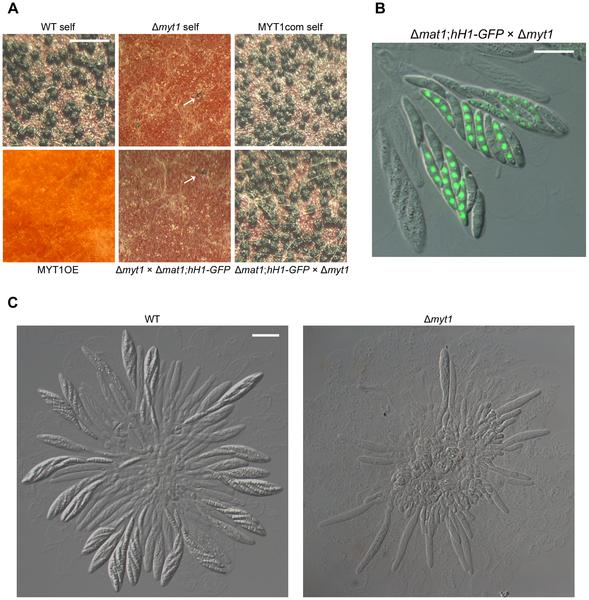User:Z3330795: Difference between revisions
| Line 50: | Line 50: | ||
[http://www.ncbi.nlm.nih.gov/pubmed/17495644] | [http://www.ncbi.nlm.nih.gov/pubmed/17495644] | ||
[[File:Sexual_development_of_MYT1_mutants.jpeg]] | |||
Revision as of 11:56, 8 August 2012
Lab Attendance
Lab 1
Lab 2
Lab 3
Fertilization
The process in Simple Steps:
Step 1 - Many sperm travel from the Male testes to the Female Egg located in the Fallopian tube.]
Step 2 - Once the sperm reach the egg, many try and "enter" by releasing enzymes breaking down the outer layer of the egg.
Step 3 - Only one sperm can penetrate and once this happens, a chemical reaction occurs "pushing" away any other sperm attempting to penetrate.
This now fertilized egg is referred to as a zygote
Step 4 - pronuclei of the egg merges with the pronuclei of the sperm resulting in cell division.
Step 5 - days later this zygote is moved along the fallopian tube and is now called a blastocyst.
Step 6 - the blastocyst is embedded in the uterine wall activating the start of pregnancy.
References: http://science.howstuffworks.com/
"Lab 1 Assessment"
1.Identify the origin of In Vitro Fertilization and the 2010 nobel prize winner associated with this technique and add a correctly formatted link to the Nobel page.
The British scientist Robert Edwards has been researching and devloping IVF since the 1950's, the first successful IVF treatment was in 1978 when the worlds first baby was born from this fertilization technique. Following this success methods have been continually rejuvenated with state of the art techniques and research.
Robert Edwards was the winner of the 2010 Nobel Prize in medicine for his efforts in the development of in-vitro fertilisation (IVF).
2.Identify and add a PubMed reference link to a recent paper on fertilisation and describe its key findings (1-2 paragraphs).
This paper is explores the potential of screening sperm before fertilization, to predict fertilization rate depending on the "quality" of the sperm. This technology would be of extreme importance and make the IVF process more efficient.
"Lab 2 Assessment"
Identify a protein associated with the implantation process, including a brief description of the protein's role.
Chemokines are a protein directly associated with the implantation process. Current research has shown that Chemokines play an executive role within the endometrium, specifically throughout implantation. It has been proven that these proteins direct the invading trophoblasts within the maternal vasculature and decidua. This invading process is critical in early development and chemical signally from these proteins allows precise depth of insertion in preparation of the crucial weeks ahead.
